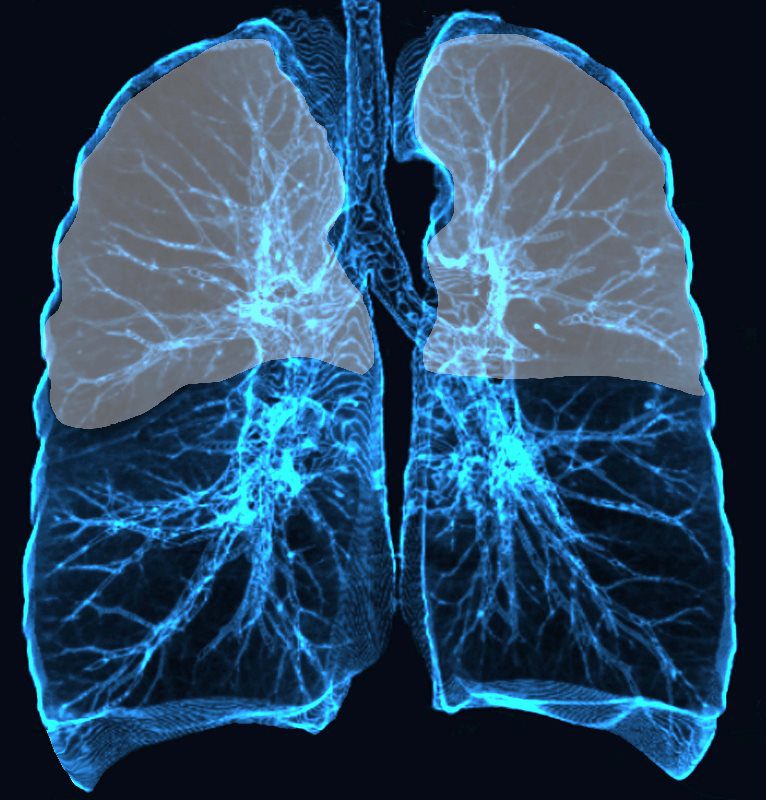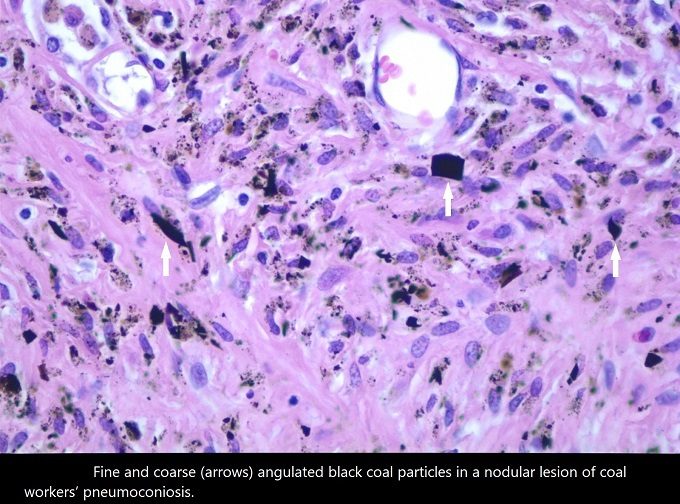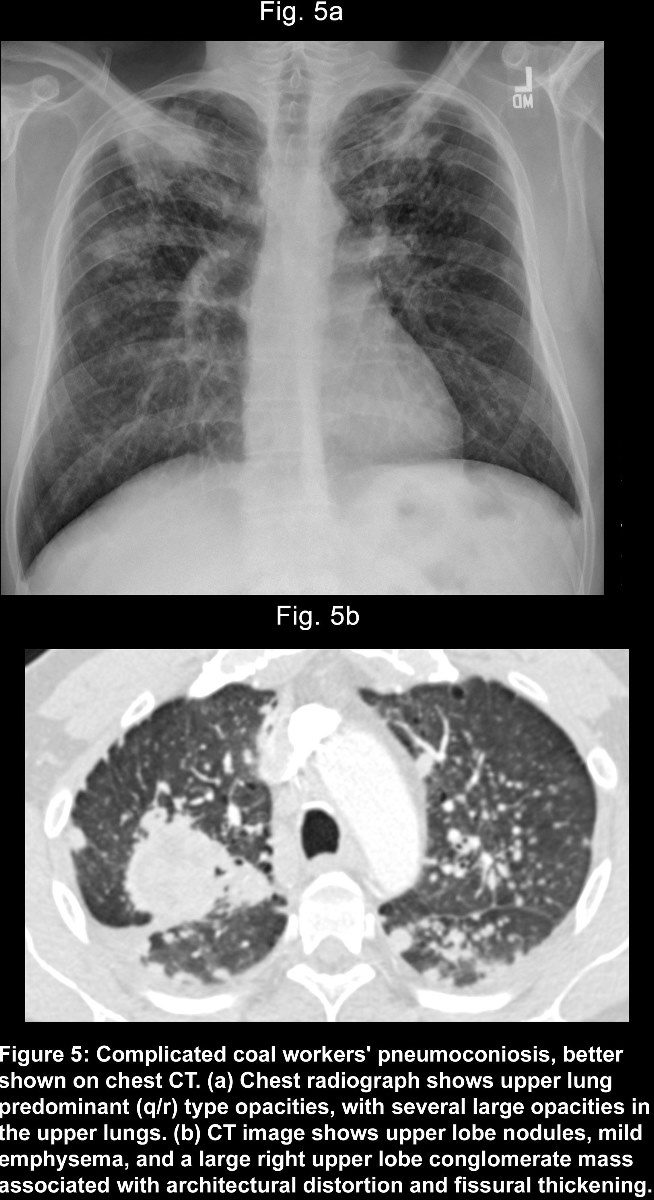Coal worker’s pneumoconiosis (CWP) is a type of lung disease caused by long-term exposure to coal dust. It is also known as “black lung disease” because it causes the lungs to turn black in color in advanced stages.

Upper and mid lung field distribution
Ashley Davidoff MD TheCommonvein.net lungs-0772
CWP is most commonly seen in coal miners, but it can also occur in workers who are exposed to coal dust in other industries, such as carbon black manufacturing and coal-fired power plants. The disease develops gradually over many years of exposure to coal dust.
Symptoms of CWP may include coughing, shortness of breath, chest tightness, and fatigue. In advanced stages, it can lead to respiratory failure and death. Diagnosis is typically made through a combination of medical history, physical examination, chest X-ray, and pulmonary function tests.
Coal worker’s pneumoconiosis (CWP) can have characteristic CT findings in the lungs that can aid in diagnosis. These findings may include:
- Small nodules: These are typically less than 1 cm in size and are most commonly seen in the upper lobes of the lungs.
- Progressive massive fibrosis (PMF): This is a severe form of CWP in which large areas of lung tissue become scarred and destroyed. PMF may appear as dense, irregular masses on CT scans, typically in the upper lobes of the lungs.
- Ground-glass opacities: These are areas of hazy, increased lung density on CT scans that may be seen in early or mild CWP.
- Emphysema: In addition to the characteristic findings of CWP, CT scans may also show evidence of emphysema, a condition characterized by damage to the air sacs in the lungs and loss of lung elasticity.
It is important to note that the CT findings of CWP can be non-specific and may also be seen in other lung diseases. Diagnosis of CWP is typically made based on a combination of medical history, physical examination, chest X-ray, and pulmonary function tests, with CT scans used to support the diagnosis and assess disease severity.
Treatment for CWP involves supportive care, such as oxygen therapy, pulmonary rehabilitation, and management of any co-existing lung diseases. There is currently no cure for CWP, but early detection and treatment can help to slow the progression of the disease.
Prevention of CWP involves minimizing exposure to coal dust through the use of engineering controls, personal protective equipment, and dust control measures in the workplace. Occupational health and safety regulations and regular medical surveillance of workers can also help to prevent CWP.

 CDC.gov
CDC.gov
